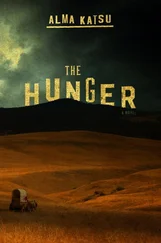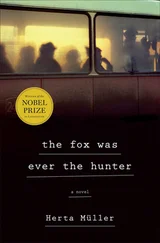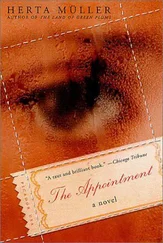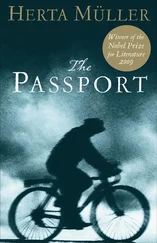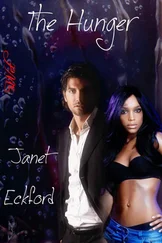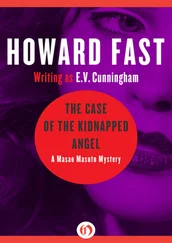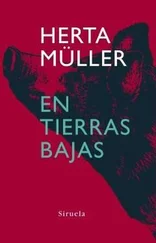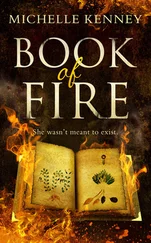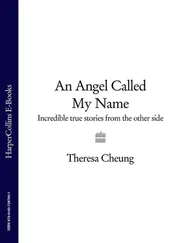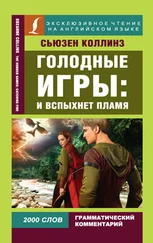My head has deposits of its own. The summer air trembles over the yama just like at home, and the sky is silky just like at home. But no one at home knows I’m still alive. At home Grandfather is eating cold cucumber salad and thinks that I am dead. Grandmother is clucking to the chickens, scattering their feed in the room-sized shade beside the shed, and thinks that I am dead. Mother and Father may be at the summerhouse in the Wench. Mother is wearing her homemade sailor suit. She’s lying in the tall grass of a mountain meadow and thinks that I’m already in heaven. And I can’t shake her and say: So, do you love me. See, I’m still alive. And Father is sitting in the kitchen, slowly filling his shells with shot, tiny balls of tempered lead for hunting hares in the waning summer. Hase-vey.
I went hunting.
Kobelian had left me alone out on the steppe, in the second waning summer, and I killed a steppe-dog with my shovel. It let out a short whistle, like a train. How the seconds drag, when a forehead has been split in two, right over the snout. Hase-vey.
I wanted to eat it.
There’s nothing here but grass. But you can’t stake things with grass, and you can’t skin things with a shovel. I didn’t have the tools, and I didn’t have the heart.
Or the time. Kobelian was back, he’d seen what I had done. I left the animal just the way it was, how the seconds drag, when a forehead has been split in two, right over the snout. Hase-vey.
Father, once you wanted to teach me how to whistle back to find someone who is lost.
Sand can be any shade of yellow, from peroxide blond to canary, or even with a tinge of pink. Yellow sand is tender, it makes you sad to see it get mixed in the gray cement.
It was late in the evening, once again Kobelian was taking Karli Halmen and me out for a private delivery, this time of yellow sand. He said: We’re going to my house. I’m not building anything, but the holiday’s coming up and, after all, people aren’t animals, you have to have a little beauty, a little culture.
Karli Halmen and I understood that yellow sand meant culture. Even in the camp yard and at the factory they strewed it along the pathways after spring and fall cleaning. The ornamental spring sand was for the end of the war and the ornamental fall sand was for the October Revolution. May 9 was the first anniversary of the peace. But neither the peace nor the anniversary was of any use to us, here in our second year in camp. Then came October. The ornamental spring sand was long gone, carried off by the wind on dry days, and washed away by the torrents of rain. Now the yard was strewn with fresh yellow fall sand, like sugar crystals. Sand to beautify the great October, but by no means a sign that we’d be allowed to go home.
Not all our deliveries were made for beautification. We hauled yellow sand by the ton, the construction sites devoured it. The sand quarry was called the kar’yer . It was inexhaustible, at least three hundred meters long and twenty to thirty meters deep, nothing but sand everywhere. An arena of sand inside an open quarry of sand. Enough to serve the entire district. And the more sand that was hauled, the higher the arena grew, as the quarry ate deeper and deeper into the earth.
If you were khitriy , or clever, you steered the truck so it backed right into the slope, then you didn’t have to shovel the sand upward, but could casually load it on the same level, or even comfortably scoop it down into the bed.
The kar’yer was fascinating, like the imprint of some giant toe. Pure sand, not a crumb of earth. Layers of sand, straight and level, one on top of the other: wax-white, skin-pale, pallid-yellow, bright-yellow, ochre, and pink. Cool and moist. As you shoveled, the sand fluffed up, drying as it flew through the air. It practically shoveled itself. The truck was quickly filled. And because it was a dump truck, it unloaded itself as well. So Karli Halmen and I stayed behind in the quarry until Kobelian came back for the next load.
When he did return, he lay down in the sand and stayed that way while we loaded up. He even closed his eyes, perhaps he fell asleep. Once the truck was full, we gently nudged his shoe with the tip of a shovel. He jumped up and stomped over to the cab. The imprint of his body stayed in the sand, as if there were two Kobelians, a hollow one lying down and another standing by the cab, with damp trousers. Before he climbed inside he spat twice into the sand, grabbed the steering wheel with one hand, and rubbed his eyes with the other. Then he got in and drove off.
Now Karli and I let ourselves drop into the sand and listened to it trickling around us, felt it clinging to our bodies. The sky curved overhead, a grassy scar marked where it met the sand. Time was still and smooth, a microscopic twinkling all around. Faraway places came to mind, as if we’d escaped and belonged to any sand anywhere in the world but not here in this place of forced labor. We fled by lying still. I looked all around: I had managed to slip below the horizon without danger and without consequences. The sand cradled my back from below, and the sky drew my face upward. Soon the sky became blind, and my eyes pulled it back down and my head was filled with its motionless blue through and through. I was blanketed by the sky and no one had any idea where I was. Not even homesickness could find me. In the sand, heaven did not set the time in motion, but neither could heaven turn back the time, just as the yellow sand couldn’t make the peace mean more than it did, not after three years, and not after four. We were in the camp after the fourth peace anniversary as well.
Karli Halmen lay facedown in his own hollow. The scars left from the bread theft shimmered like wax through his short hair. The sunlight lit up his ear, revealing the red silk of tiny veins. I thought about my last rendezvous in the Alder Park and the Neptune Baths with the twice-my-age married Romanian. How long had he waited for me that first time I didn’t appear. And how often did he wait before he realized that I wasn’t coming back the next time, or the time after that, or ever again. It would be at least half an hour before Kobelian came back.
And once again something raised my hand, I wanted to caress Karli Halmen. Luckily he helped me out of my temptation. He raised his face—he had bitten into the sand. He chewed the sand, it grated in his mouth, and he swallowed. I froze, and he filled his mouth a second time. The grains spilled from his cheeks as he ate. And the sand left the imprint of a sieve on his cheeks and nose and on his forehead. And the tears on both cheeks left a pale brown string.
As a child I’d take a peach and bite into it, he said, then I’d drop it on the ground so it would land where I’d bitten. Then I’d pick it up and eat the sandy spot and drop it again. Until all that was left was the pit. My father took me to the doctor because I wasn’t normal, because I liked the taste of sand. Now I have more than enough sand and can’t remember what a peach looks like at all.
I said: Yellow, with delicate fuzz and a little red silk around the pit.
We heard the truck coming and got up.
Karli Halmen began shoveling. Tears were running down his face as he filled his shovel. When he sent the sand flying, the tears ran left, into his mouth, and right, into his ear.
The Russians have their ways, too
Karli Halmen and I were once again riding across the steppe in the Lancia. Steppe-dogs darting off in all directions. Tire tracks everywhere, flattened bundles of grass, lacquered reddish-brown with dried blood. Everywhere swarms of flies, parading over squashed fur and spilled entrails, some with a fresh blue-white sheen like coiled strings of pearls, others bluish red and half gone to rot, and others withered, like dried flowers. Some dogs had been hurled to the side of the tire tracks, seemingly untouched by the wheels, as though asleep. Karli Halmen said: When they’re dead they look like flatirons. In no way did they look like flatirons. How did that ever occur to him, I’d already forgotten the word flatiron.
Читать дальше

